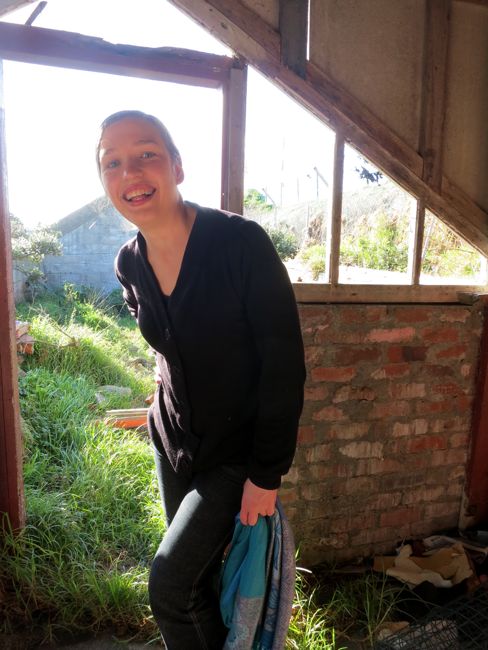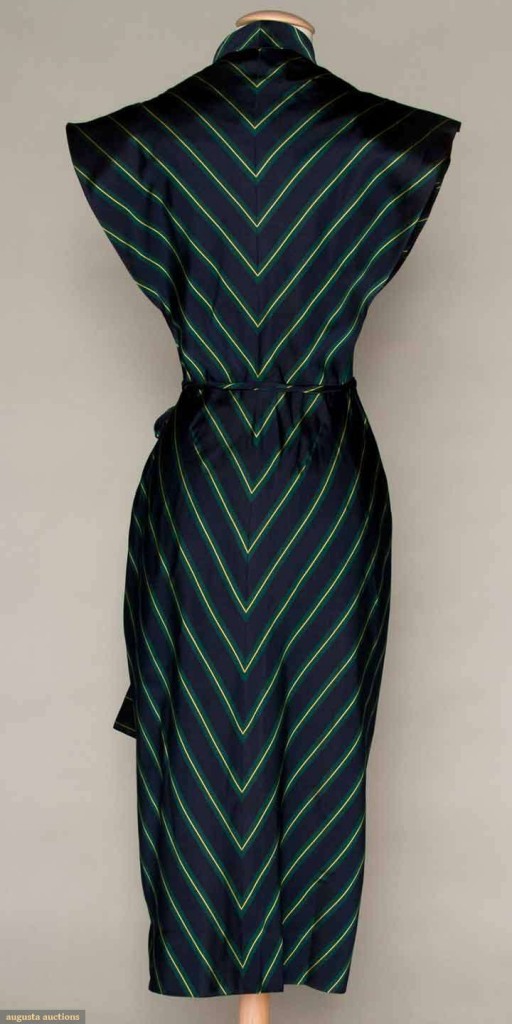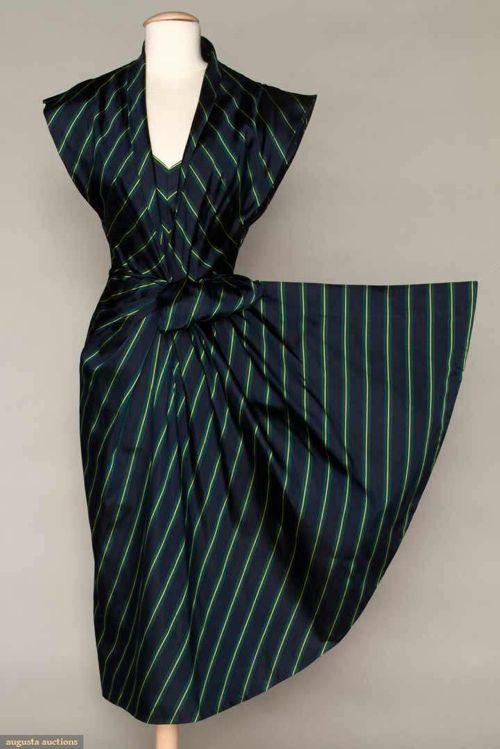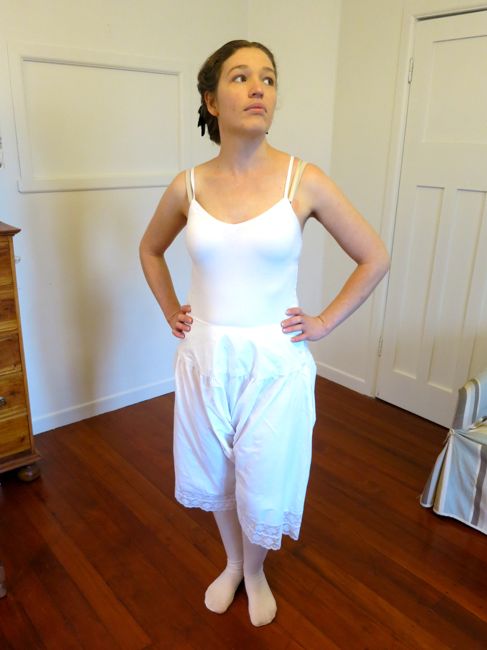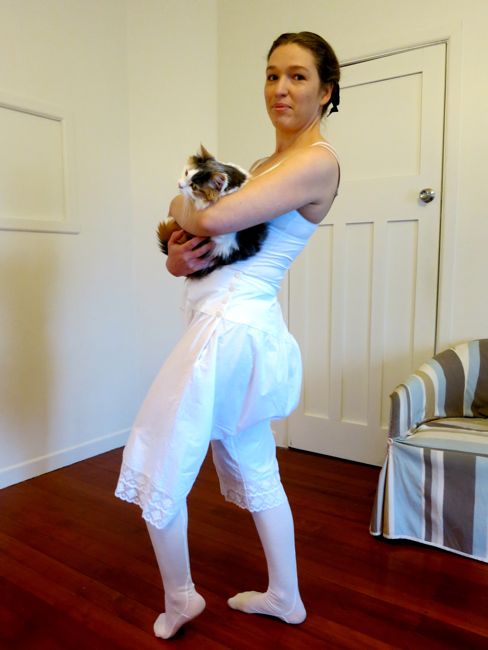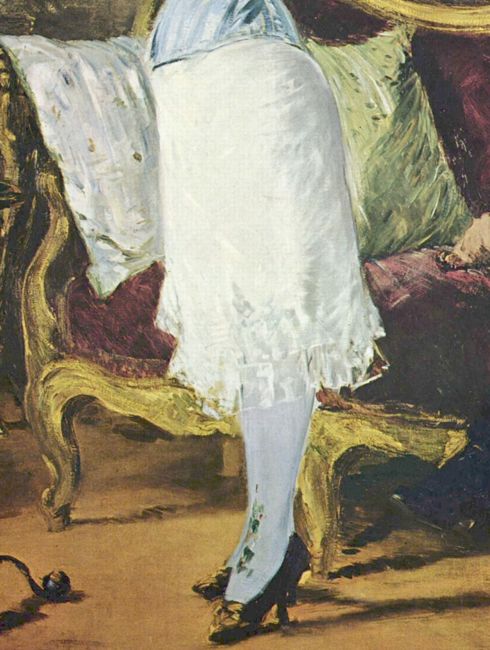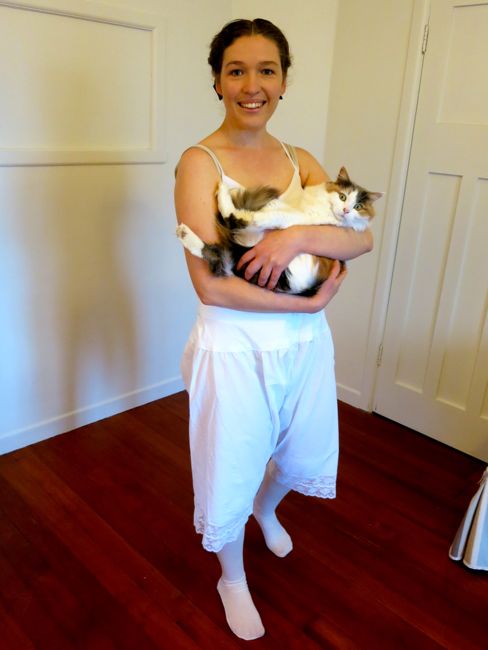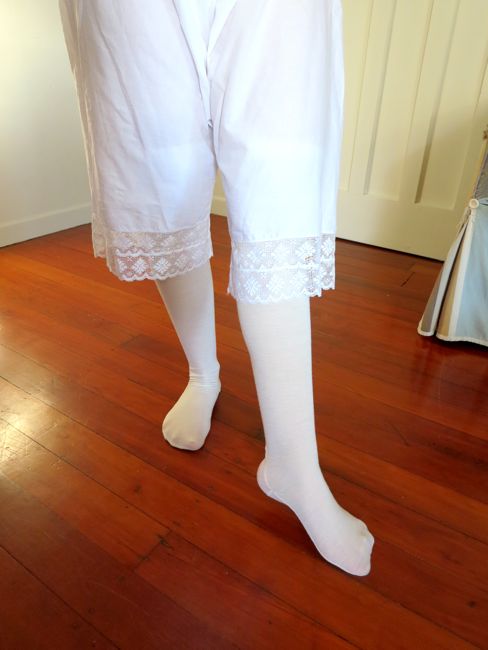Back during the Historical Sew Fortnightly ‘Black & White’ challenge in addition to a white item, I also whipped up a black item.
This:
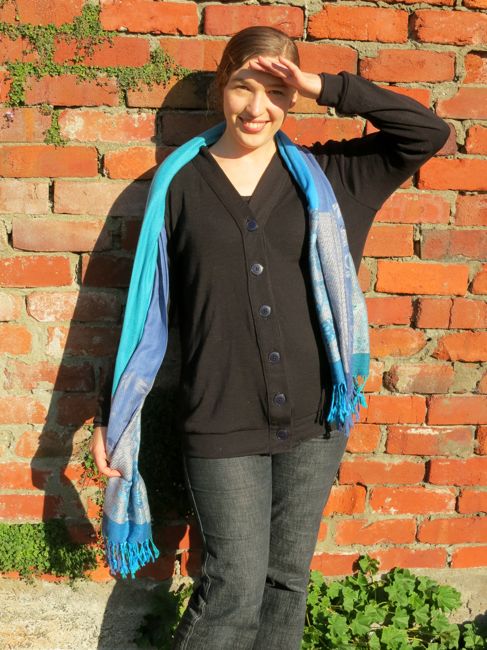
It’s a sort-of, maybe, ’20s inspired cardigan.
Granted, it looks a lot more 1920s if I pair it with a ’20s skirt and thick stockings and ’20s shoes!
Confession time: this cardigan did not, at all, start out as an intentionally even remotely historical piece.
It started out because I noticed that there was a new cardigan pattern out: McCall’s M6803. I love cardigans, and have been on the hunt for the perfect cardigan pattern (though the goal of my search has gradually downgraded from ‘perfect’, to ‘good’, to ‘reasonable’, to ‘not completely awful’ as I work through the options).
Obviously I had to try this one.
Let me tell you, M6803 is not perfect. It’s not even good. Or reasonable. In fact, it’s completely awful. (in fact, they are all so awful I’ve sucked it up and drafted my own – but more about that later)
The big ‘Unisex’ sticker on the cover did make me suspicious, but I have bought lots of men’s cardigans over the years for myself, so unisex can be awesome.
In the case of this pattern, ‘Unisex’ is code for “well, men and women both have two arms and a head so if you design it really big it call pull over all of those and fit both.”
I cut a size small. I’m not a big woman, but I’m hardly tiny (I’m 5’7″ and measure 37″ around my bust). The cardigan was ENORMOUS. About 6 sizes too big on me. And about 4 sizes too big on Mr D, who wears a men’s small in everything. (I know, I should have pre-measured, but I wanted to try the pattern as it was).
Also, the instructions on how to construct the cardigan were incredibly bad and stupid. Anyone with any experience with sewing knits would immediately look at them and know they wouldn’t work. A fully interfaced collar band, with no suggestion that it should be a knit interfacing, and no allowance for stretching the band so it snugs around the neck? And the band is cut against the stretch?
Anyway, since I had a LOT of cardigan to work with, and I was going to have to re-do every bit of sewing on the cardigan, I decided to cut it down based on an almost disintegrated late ’20s cardigan I studied a few years ago.

I was able to rescue most of the garment, but the unsatisfactory neck binding mostly had to stay, so you can see how it gapes a bit around my neck.
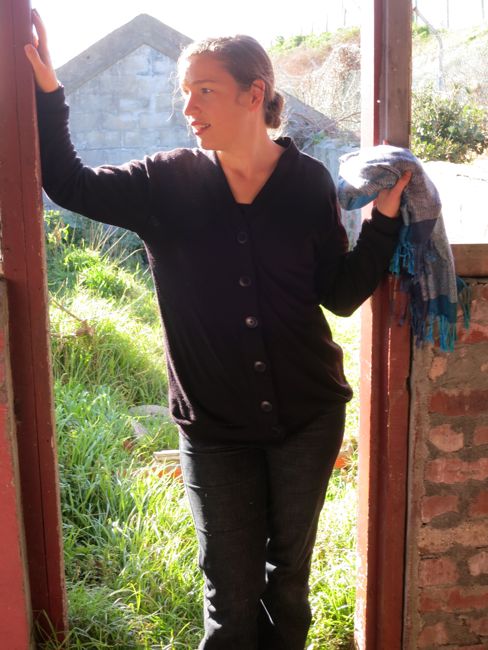
The cardigan I based it on was hand knitted, but I used sewing techniques I’ve seen on sewn ’20s & ’30s knitwear – mostly swimsuits, but occasionally other garments. This meant I could use the overlocker, because sewn knitwear in the ’20s & ’30s was almost exclusively commercially made, and overlockers have been around since the 1880s in commercial workshops.
Stylistically, the biggest difference between my cardigan and the original (which was also boring black) was that I didn’t add front patch pockets, mostly because I don’t use them, don’t like the bulk they add, and was kinda over the cardigan by that point.
Cut-wise, my cardigan is probably still a bit loose under the arms for a ’20s cardigan. Considering the overgrown ’80s monstrosity it started as, it’s not bad though!
I’ve been wearing the cardigan for almost two months now, but haven’t gotten photos simply because I’ve been so busy – teaching every single weeknight, and when I running around with meetings on the weekends the weather was crap.
This weekend I finally had a free afternoon, and the weather was spectacular. Wellington has been having the best winter: much warmer than usual, hardly any wind, and lots and lots of sparkling, sunny days. Today was one of them, so I convinced Mr D to go for a drive and a photoshoot.
The weather was so nice, and I was feeling so energetic, that I opted for scramble and ramble friendly jeans and sneakers, instead of vintage appropriate mid-calf skirts and heavy stockings and low-heeled leather shoes.
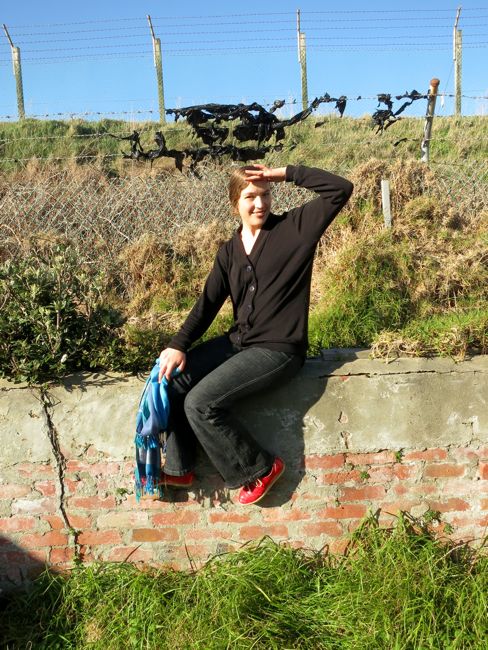
Since I wasn’t going for vintage styling, instead of heading for a vintage location, we explored a ramble-y walk and a scramble-y derelict building in a location we’ve been meaning to explore for a while.
Rather than sporty ’20s girl out for a winter walk, the photoshoot turned out to be all about barbed wire, and tumbled-down beams, and graffiti – which is quite unusual for me, but which I thoroughly enjoyed.
Check on this awesome piece of graffiti:
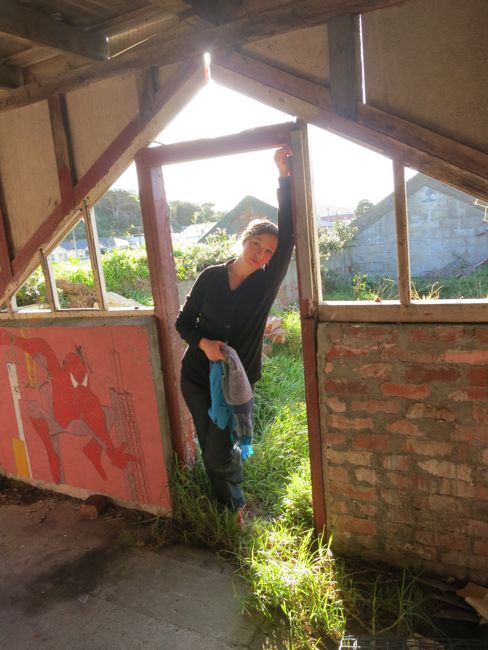
And a close up:
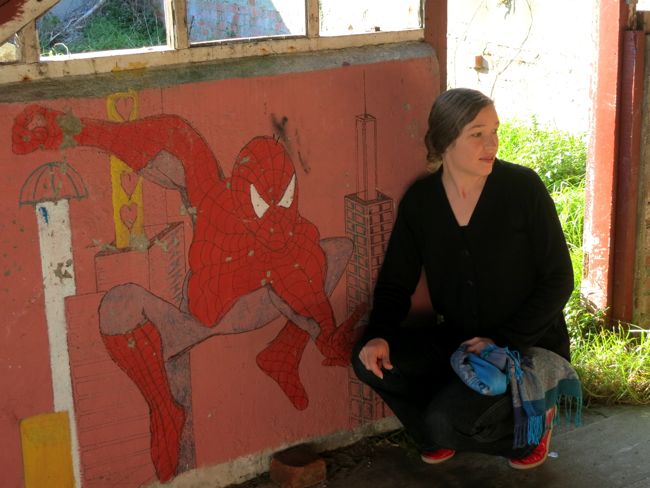
Makes me want to go all Cation and make a Spiderman dress!
This one is quite good too:

Happy Birthday!
My favourite photos aren’t even really about the cardigan. They are about the setting, and the light.
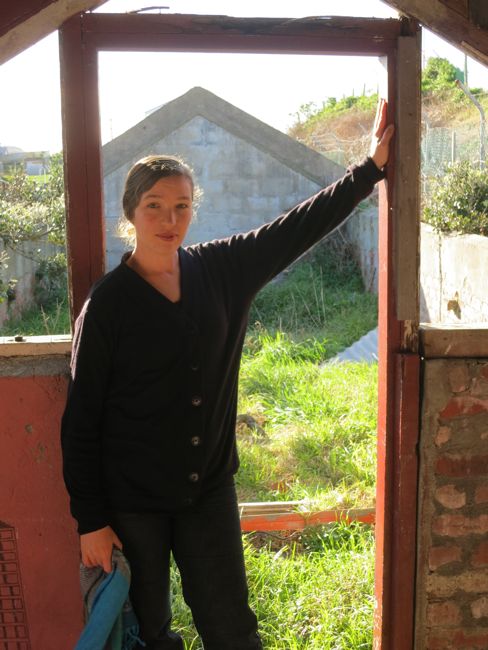
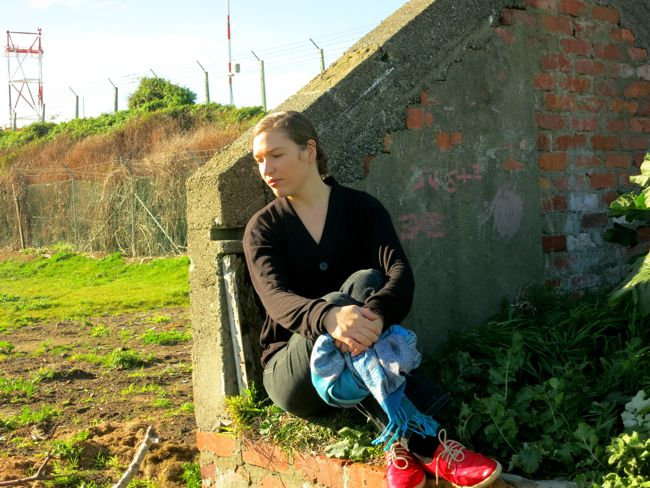
(Can we talk for a moment about how awesome my sneakers are? I bought them at Art Deco weekend because it was 31 degrees and the shoe store was air conditioned and I was so happy to be in it I tried on every single pair of shoes in the shop in my size and ended up buying two pairs. These ones are SO awesome I try to wear them every day. My pink and fuchsia scarves and tops haven’t gotten much of an outing this winter because they clash horribly with the shoes, and I’m always wearing the shoes! The turquoise scarf was a birthday present from my (also awesome) Mother-in-Law (along with the gift certificate I mentioned earlier) and it’s been my go-to scarf with these shoes).
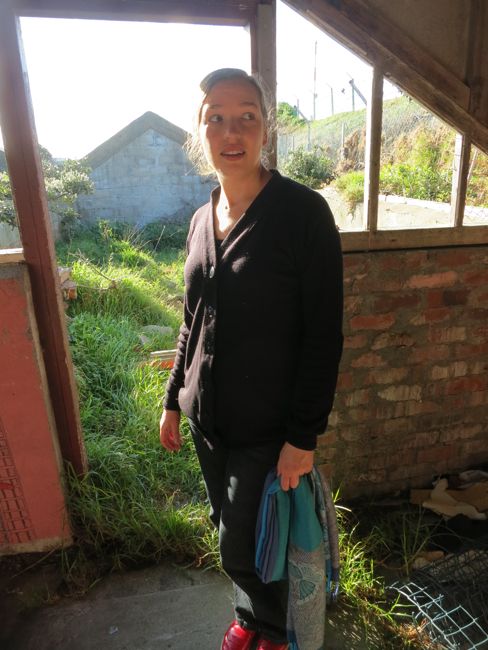
The Challenge: #9 — Black & White
Fabric: 1.2m merino knit tubing, bought at Fabric-a-Brac for $10 for 3m. (I could count this for the Under $10 challenge if I hadn’t finished it over 6 weeks ago!)
Pattern: It started as McCall’s M6803, but there is only one original seamline left, so mostly my own, based on an on a vintage original
Year: 1925-33
Notions: Cotton thread, darkest blue buttons (they look black in everything but the brightest sunlight – it’s a beautiful effect).
How historically accurate is it? Roughly plausible? 50% maybe? Merino (called Botany wool at the time) was used in the ’20s, the pattern is based on a period original – albeit a hand knitted one, and the construction is based on period construction, but the combination of all three is unproven.
Hours to complete: Roughly 6, though I got lost between the terrible origins and the finished product.
First worn: Oh gosh, I can’t remember! I’ve worn this so much since making it! The merino is so delicious: super soft, super light, super warm. It’s like wearing a cloud made of angel hugs. It is a bit frumpy and schlumpy paired with jeans, but so comfortable I can’t resist throwing it on all the time!
